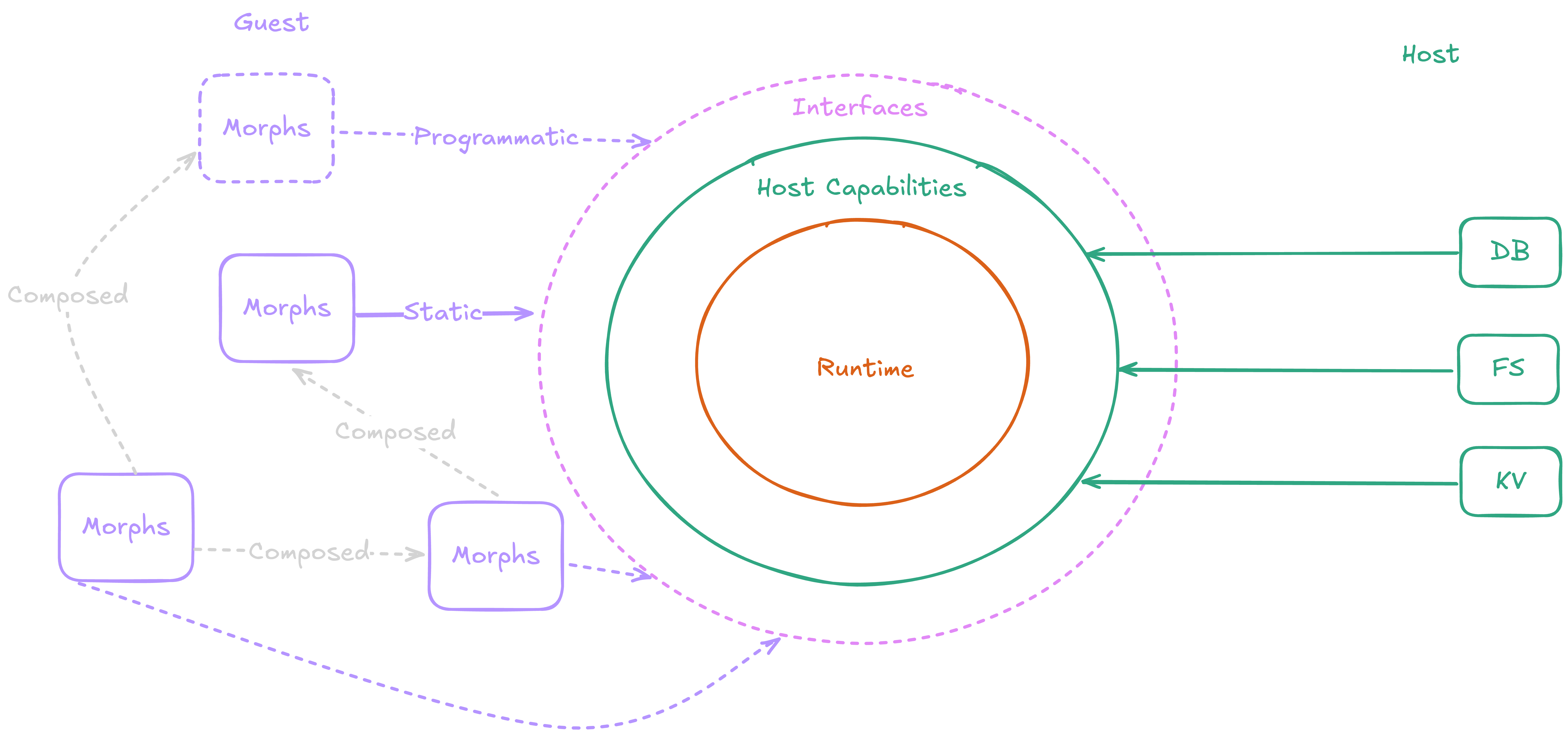Design Patterns
Hayride follows a design philosophy called Morphological Architecture—a modular approach to building applications from interoperable WebAssembly components (Morphs).
Rather than relying on monolithic binaries or tightly coupled microservices, Morphological Architecture encourages systems to be composed from discrete, reusable components that communicate through well-defined interfaces.
Using this pattern, Hayride enables binary artifacts to be dynamically composed into modular applications and executed within a secure, sandboxed environment—ensuring isolation, portability, and controlled interaction between components.
Morphological Architecture builds on prior ideas—such as the neomonolith architecture.
The introduction of the WebAssembly component model unlocks new possibilities for how applications are developed, composed, and deployed. By formalizing interfaces and enabling true modularity across languages and runtimes, this model paves the way for more flexible, secure, and scalable system design.
The following diagram illustrates the Morphological Architecture pattern:

This architecture pattern makes it easy to:
- Evolve systems incrementally by swapping or extending individual Morphs
- Share functionality across platforms
- Enable language-agnostic development with strong interface contracts
- Execute untrusted code by adhering to the capabilities of the host through defined interfaces.
Morphological Architecture in Hayride
Hayride itself implements a Morphological Architecture platform, providing the core runtime and interfaces that enable Morphs to be composed and executed securely.
Hayride uses the Morphological Architecture pattern to expose a set of core capabilities that Morphs can import and use. These capabilities are defined using WebAssembly Interface Types (WIT) and are implemented as host functions within the Hayride runtime.
This allows Hayride to provide a consistent, secure execution environment without forcing Morphs to depend on specific implementations or runtime details. Morphs can be developed in any language that compiles to WebAssembly, and they can import the capabilities they need from the Hayride runtime or other runtimes that implement the same interfaces.
Why Morphological Architecture?
We created the concept of Morphological Architecture to describe the design principles that underpin Hayride.
Furthermore, we believe that as more and more code becomes generated by AI, the need for modular, composable architectures will become increasingly important, while the implementation details of how these components are executed will become less relevant.
In short, with the use of generative AI, software components can morph over time—adapting to new requirements, environments, and capabilities—by dynamically generating or modifying code within well-defined interfaces. Instead of requiring full rewrites or rigid versioning, the system evolves incrementally through component composition.
This architectural approach enables continuous adaptability, robustness, and extensibility, aligning closely with the dynamic nature of AI-driven development.